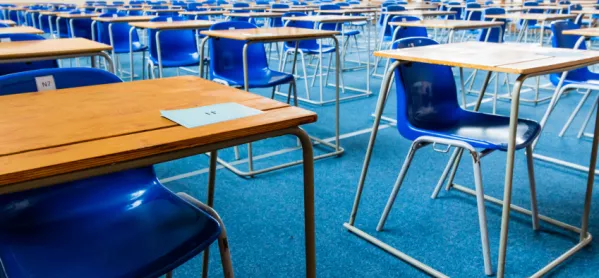Number of secondaries missing GCSE floor target falls
Share
Number of secondaries missing GCSE floor target falls
https://www.tes.com/magazine/archive/number-secondaries-missing-gcse-floor-target-falls

The number of schools with GCSE results below government “floor targets” and therefore at risk of forced academy conversion fell this year, official figures show.
Data released as part of school performance tables this morning shows that 312 schools failed to meet the government’s floor target, down from 330 last year.
State secondaries are considered to be underperforming if fewer than 40 per cent of their pupils gain at least five A* to C grades at GCSE, including English and maths. Last year the number deemed underperforming doubled in the wake of a major overhaul of the exams system.
The Department for Education insisted today that being below the floor standards “does not automatically mean the school will face intervention”, but said it was “one of a number of factors schools are judged on”.
This is the final year in which schools’ performance will be measured based on the proportion of pupils gaining five A* to C grades.
From September a new system, Progress 8, will be used for all schools. This tracks the progress pupils have made in eight subjects since they started secondary school, rather than just looking at their exam results.
About one in 10 secondary schools in England - 327 schools - opted in early to Progress 8 this year. Under this system schools are given a score based on how their pupils have progressed compared to the national average. Of these, 17 were below the floor standard of -0.5.
Malcolm Trobe, deputy general secretary of the Association of School and College Leaders, said Progress 8 was “overall…a fairer way of judging schools.”
He said: “Measuring schools on GCSE attainment does not take into account the fact that children are at different points when they start their secondary education. It can unfairly stigmatise schools that are actually doing some superb work in difficult circumstances.”
Today’s performance figures also showed that, for the first time, more than half of A-level entries were in the “facilitating subjects” that are in demand among universities. The Department for Education has hailed the finding as “a new milestone”.
They showed a 1 per cent rise in the number of pupils staying on for post-16 study.
However, the figures also showed that white working-class boys continued to be among the lowest-performing groups of pupils.
Schools minister Nick Gibb said: “Today’s results show how far we have come in raising standards, but they also highlight where some pupils are still at risk of falling behind.
“We refuse to accept second best for any young person and we must now focus on extending opportunity for all. This government is giving all young people, irrespective of their background, a fair shot in life and we must not let up the pace of reform now.
“Through our focus on delivering educational excellence everywhere and the dedication of our schools, we will tackle those pockets of persistent underperformance so every child fulfils their potential.”
Do you agree with this type of key performance target for schools? Join the discussion on TES Community.
You've reached your limit of free articles this month. Subscribe for £1 per month for three months and get: